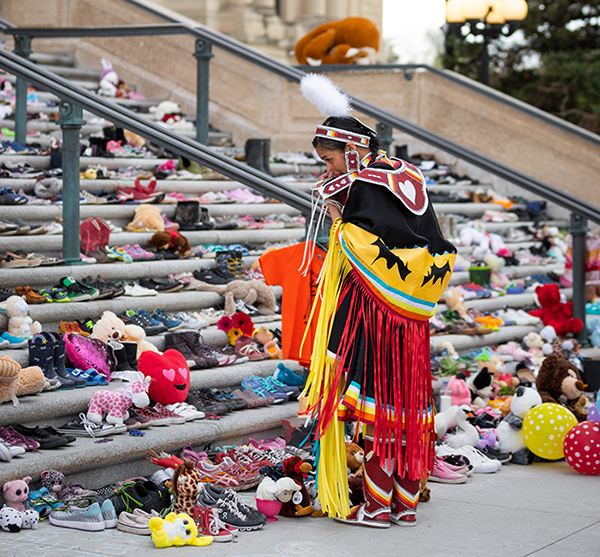Reunion And Reconciliation: Mending Bonds for Unity
Reunion and reconciliation pave the way for mending fractured relationships and fostering harmonious unions. These processes require effort, forgiveness, and effective communication to succeed.
Rebuilding relationships after a conflict or a period of distance often seems daunting, but it is a critical and hopeful journey towards emotional healing and unity. A harmonious union, whether in a personal or professional context, hinges on the willingness of parties involved to address underlying issues and develop a mutual understanding.
Reconciliation involves confronting past grievances, while reunion emphasizes the rebonding of individuals. A successful path to recreating a peaceful and cooperative atmosphere involves honesty, empathy, and commitment. Engaging in an active dialogue, setting realistic goals, and displaying a readiness to compromise are essential steps that contribute significantly to the foundation of a renewed and resilient partnership. Navigating this path wisely leads to restored trust and a stronger bond, ultimately enriching the lives of those embarking on this transformative journey.
Article Content
- The Emotional Landscape Of Reunions
- Breaking The Ice: First Steps To Mending Bonds
- Forgiveness As The Keystone Of Reconciliation
- Communication: Rebuilding Trust Brick By Brick
- Creating A Sustainable Path Forward
- The Ripple Effect Of Reunion
- Frequently Asked Questions For Reunion And Reconciliation: The Path To Harmonious Union
- Conclusion
The Emotional Landscape Of Reunions
Imagine standing at a crossroads where paths merge after years apart. This is the emotional landscape of reunions, a terrain filled with feelings of anticipation, joy, and nostalgia. As much as reunions conjure up images of joyous embraces, they also require navigating through the past’s dense fog. Each reunion carries a unique emotional blueprint, shaped by the distance of time and the complexity of past interactions.
Exploring The Desire For Connection
At the heart of every reunion lies a fundamental urge—the desire for connection. Shared histories and past experiences act as a magnet, pulling individuals back together. This desire can be potent, often overriding the apprehension surrounding old wounds and differences.
- Renewed Bonds: Ties rekindled after time apart bring a renewed sense of closeness.
- Shared History: Common memories serve as a powerful glue anchoring relationships.
- Emotional Fulfillment: Engaging with our past fills a need for emotional completeness.
As excitement builds, so does the recognition of past disagreements. Reunions often bring to surface unresolved issues, requiring care and patience to address.
| Strategy | Benefit |
|---|---|
| Open Dialogue | Facilitates healing and clarity |
| Forgiveness | Paves the way for a fresh start |
| Setting Boundaries | Ensures respect and emotional safety |
Walking through the former battleground of conflicts can lead to a harmonious future. Successful navigation rests on mutual respect and a willingness to understand diverse perspectives.

Credit: www.amazon.se
Breaking The Ice: First Steps To Mending Bonds
Embarking on the journey to mend strained relationships can be as daunting as it is necessary. In the quest for reunion and reconciliation, the initial step is akin to thawing ice. It’s delicate yet powerful. The section “Breaking the Ice: First Steps to Mending Bonds” lays out simple, effective strategies to navigate this sensitive process. Each action paves the way towards a more harmonious union, and it starts with the courage to reach out.
Initiating Contact
Rebuilding bridges doesn’t happen without reaching across. Start with a message or a call to open the lines of communication. Choose a method that feels comfortable and non-invasive. A text or email allows the other party time to react on their terms, making it an excellent first choice.
- Pick a neutral time when tensions are lower.
- Keep the message short and sincere.
- Avoid blame and express a desire to talk.
Setting The Tone For Healing
Once contact is established, it’s crucial to set a positive, constructive atmosphere. Approach the conversation with openness and honesty. Ensure the environment is comfortable and free of distractions.
- Begin with positive affirmations about the relationship.
- Express willingness to listen and understand.
- Address issues with compassion and empathy.
- Acknowledge past hurt without dwelling on it.
Remember, mending bonds is a process, not a one-time event. These first steps lay the groundwork for a deeper, more resilient connection. With patience and effort, reconciliation becomes possible.
Forgiveness As The Keystone Of Reconciliation
In the journey toward a harmonious union, forgiveness stands as a pillar of strength. It dissolves barriers, allowing for growth and reconnection. Recognizing its role is pivotal. Let’s explore how empathy and overcoming resentment are integral to true forgiveness and thus, a path towards a united peace.
Embracing Empathy
Empathy is about shared understanding. It paves the way for forgiveness. By stepping into another’s shoes, we grasp their feelings and worldview. This insight fosters compassion, an essential element for reconciliation.
- Listen actively to their story.
- Acknowledge their feelings without judgement.
- Reflect on their situation from their perspective.
Empathy transforms how we see conflicts. It binds us together, softening hearts to welcome forgiveness.
Overcoming The Resentment Hurdle
Resentment is a common block on the road to harmony. In many cases, it holds back the healing. However, conquering this hurdle is within reach. Small, consistent steps paint the broader picture of reconciliation. Here are some steps to help tackle resentment:
- Recognize resentment’s impact on your spirit and health.
- Commit to a personal intention for peace and healing.
- Express your feelings through writing or conversation.
- Seek understanding rather than blame.
With each stride over this hurdle, forgiveness begins to take root. It allows us to leave the past behind and step forward together.

Credit: ctb.ku.edu
Communication: Rebuilding Trust Brick By Brick
When relationships go through tough times, trust can falter. Rebuilding trust is vital for a resolution. It requires laying down strong communication foundations. See it as constructing a wall brick by brick. This part of the journey is crucial for reuniting and reconciling with each other.
Active Listening Skills
Active listening is vital for understanding. It goes beyond hearing words. It involves attention, body language, and response. Here are key steps:
- Maintain eye contact: Shows focus and respect.
- Nod and smile: Provides non-verbal feedback.
- Avoid interruptions: Respects the speaker’s thoughts.
- Reflect on what’s said: Ensures accurate comprehension.
- Ask questions: Clarifies points and deepens understanding.
Expressing Thoughts And Feelings Constructively
Sharing your side is as important as listening. Express feelings and thoughts in a way that aids healing. Here’s how:
- Use “I” statements: Speak from personal experience to avoid blame.
- Stay calm: Keeps the dialogue productive.
- Be clear and concise: Aids better understanding.
- Focus on solutions: Creates a path forward.
- Recognize emotions: Validates both sides’ feelings.
Creating A Sustainable Path Forward
When two sides come together after a failure or disagreement, the road ahead matters. The focus here should be on ‘Creating a Sustainable Path Forward’. This means planning actions that help maintain harmony over time. These steps are vital for every lasting peace and cooperation. Let’s delve into how to make this journey successful.
Establishing Common Ground
Finding shared values is the first step to unity. To do this, all parties must voice their views and listen to others. This approach will bring out things everyone agrees on. Imagine this as building a bridge where everyone can meet.
- Open dialogue: Encourage conversation without blame.
- Empathy: Try to understand different perspectives.
- Mutual respect: Value each person’s input equally.
Committing To Ongoing Efforts
Peace is not a one-time event. It requires continuous work. By committing to future actions, groups make sure they stay on a peaceful path. This often includes regular check-ins and updates on progress.
- Create a timeline for goals.
- Arrange regular meetings to discuss achievements and hurdles.
- Establish a feedback system that allows for adjustments.

Credit: bnn.network
The Ripple Effect Of Reunion
Imagine a single stone thrown into a still pond. The impact creates ripples that extend far beyond the initial splash. Similarly, reunions and reconciliations have a profound ripple effect, reaching out to bind communities and inspire unity. This effect can transform relationships, groups, and entire communities with positive energy and purpose.
Strengthening Community Bonds
Reunions are more than just personal events; they serve as a powerful catalyst for strengthening the fabric of communities. The act of coming back together creates a network of support, understanding, and shared memories. These stronger bonds lead to increased:
- Cooperation in communal projects
- Engagement in local events
- Trust, making neighborhoods safer
Each rekindled relationship adds to the collective strength and resilience of the community. This unity encourages everyone to work together for the common good.
Inspiring Others Toward Unity
The influence of a heartfelt reunion can be contagious. It sparks a desire in others to seek out and mend their own relationships. This inspiration can lead to:
| Actions | Outcomes |
|---|---|
| Reaching out | New bonds formed |
| Forgiveness | Old wounds healed |
| Collaboration | Common goals achieved |
These actions ripple throughout the community, encouraging a wave of unity that uplifts and connects all involved.
Frequently Asked Questions For Reunion And Reconciliation: The Path To Harmonious Union
What Is The Difference Between A Union And A Reunion?
A union is the act of joining two or more things into one. A reunion refers to the gathering of individuals or groups who have been apart.
How Do Twin Flames Reunite After Separation?
Twin flames often reunite after introspection and personal growth. Healing emotional wounds and understanding the separation’s purpose are key. Communication and a mutual desire for reunion pave the way for their reconnection. Fulfilling individual soul missions can also draw them back together.
Can Family Reunions Aid In Healing Old Wounds?
Family reunions can be powerful venues for healing, fostering an environment where communication can lead to reconciliation. Shared histories and reconnecting with loved ones help bridge gaps, address past misunderstandings, and create new, positive memories together.
What Steps Lead To Reconciliation With Estranged Relatives?
Initiating contact, expressing willingness to reconcile, actively listening, and extending forgiveness are key steps. It’s crucial to establish boundaries and mutual respect while navigating the complex dynamics of familial relationships towards a harmonious connection.
Conclusion
As we journey toward unity, remember: patience and empathy heal rifts. Real connections spring from honest confrontations paired with the willingness to forgive. Embrace this heartwarming process, and let the bonds of reunion solidify into a long-lasting, harmonious union. Cherish each step on this transformative path.
